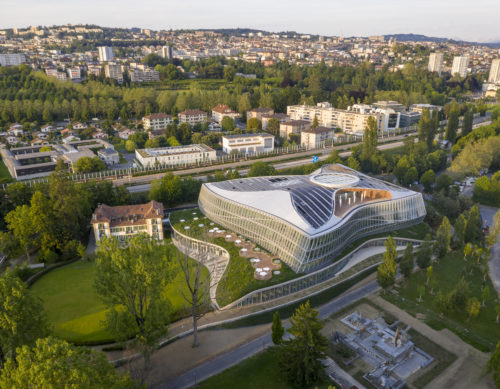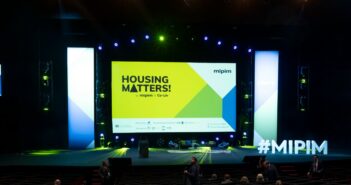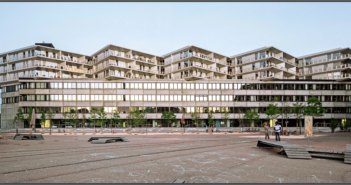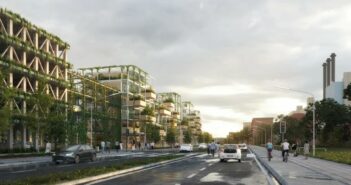What end users want from workspace is as much about what they are looking to achieve within that space as about the building itself, and the amenities on offer, concluded the panel at the International End Users Summit at MIPIM 2019.
The overall demand from end users is for flexibility. This is flexibility to upscale quickly, to change with a fast-evolving world, to ‘live’ their brand and, most importantly, to adapt to the workplace needs and expectations of their employees.
In a survey carried out in the UK, 97% of companies said that their employees’ workplace expectations were changing. The top three priorities for employees were: flexible working hours, agile/home working and mental health.
“People’s intrinsic desire for a positive community will only get stronger” – International End Users Summit, MIPIM 2019
As the 2020s approach, building design is playing an increasingly key role in contributing not only to employee wellbeing, but also productivity, recruitment and retention; and in ensuring that the built environment reflects corporate social and wellbeing policies.
As one panel member at the International End Users Summit said: “It is all about creating positive communities, and people’s intrinsic desire for a positive community will only get stronger, whether over the next five years or 20.”
Here we follow up with three of the panel members:
Facebook: scaling up fast … and don’t forget the cloud
For Facebook, it is all about the ability to scale up fast. When Dan Madrigal, Head of Acquisitions – Infrastructure/Europe at Facebook, joined five years ago, the company employed more than 6,000 people. Now the social media and social networking services giant has nearly 40,000 employees.
“To stay ahead of the curve, we need additional space faster than we can build or lease it,” said Madrigal at the MIPIM International End Users Summit.

Facebook signed a lease on a 14-acre site in Ballsbridge near Dublin last year for their first HQ outside the US.
“We would never want our hiring strategy to be driven by not having enough space” – Dan Madrigal, Facebook
Irish developer Ronan Group Real Estate has already started work on the first phase of the new HQ, the 32,500 sq m (350,000 sq ft) Fibonacci Square. In total, the Facebook campus in Ireland will offer around 80,000 sq m (870,000 sq ft) of workspace capable of accommodating 6,000 employees.
This new HQ was an “opportunistic move”, said Madrigal. “It is about making sure that we have enough capacity not only on the people side but also on the data side. We would never want our hiring strategy to be driven by not having enough space.”
The “nascent”’ asset class of data centres will “continue to be relevant, especially when we start to invest in more immersive technology” – Dan Madrigal, Facebook
Madrigal’s job is to make sure that Facebook has enough capacity in the cloud through the “nascent” asset class of data centres. Following Facebook’s latest announcement of a new data centre in Singapore, the company will have 15 data centres around the world.
“Data centres will continue to be relevant, especially when we start to invest in more immersive technology, such as virtual reality and augmented reality,” said Madrigal. “The bandwidth requirements for immersive technology is exponentially more than a cat photo that you post to share with your friends.”
Zalando: building the brand vision into the new headquarters
Another user to scale up fast is Berlin-based Zalando. Revenues at Europe’s biggest online fashion retailer are growing by around 20-25% a year.
Underpinning that growth is Zalando’s vision of becoming a global ‘starting point for fashion’ – fulfilling all the fashion needs of their (currently) more than 26 million active customers in 17 markets.
This vision has been translated into the design, layout and operations of the company’s two new X and O headquarter buildings, which join the existing 100,000 sq m Zalando campus near the East Side Gallery in Berlin.

Zalando Berlin
“Our new headquarters is designed to encourage people to stroll between different floors, supporting serendipitous encounters across functions and levels” – Raimund Paetzmann, Zalando
The buildings opened this summer to provide 43,000 sq m of workspace, and a new way of working, for 2,500 creative employees, together with a showroom, an atrium that opens out into an events space, with the wooden stairs doubling as seats, and a basketball court on the roof.

Raimund Paetzmann, Vice-President, Corporate Real Estate, Zalando SE, said: “In the past, offices reflected hierarchies. Our new headquarters is designed to encourage people to stroll between different floors, supporting serendipitous encounters across functions and levels. It is about providing an environment where employees, partners and clients from diverse backgrounds can work and learn together to create a platform of collaboration.”
Reflecting Zalando’s approach of ‘Work Your Way’, Paetzmann continued: “We want our employees to find the right environment for different tasks and work styles. For some people, it might be a single desk in the same team zone; for others, it might be frequently changing environments with different teams.”
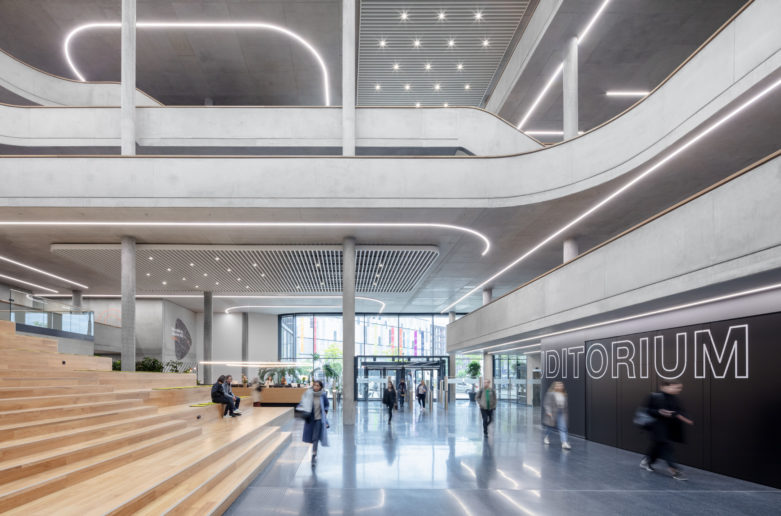
Fostering a culture of collaboration requires a “joint effort to create a vision accessible to everyone from a cultural, technical and physical perspective”, said Paetzmann. It is about collaboratively building a bridge to connect the vision with the reality. “The headquarters is the heart of our campus area: a place where all employees are welcome to ‘work their way’.”
Olympic House in Lausanne
The International Olympic Committee officially opened its new headquarters, Olympic House, in Lausanne this June.
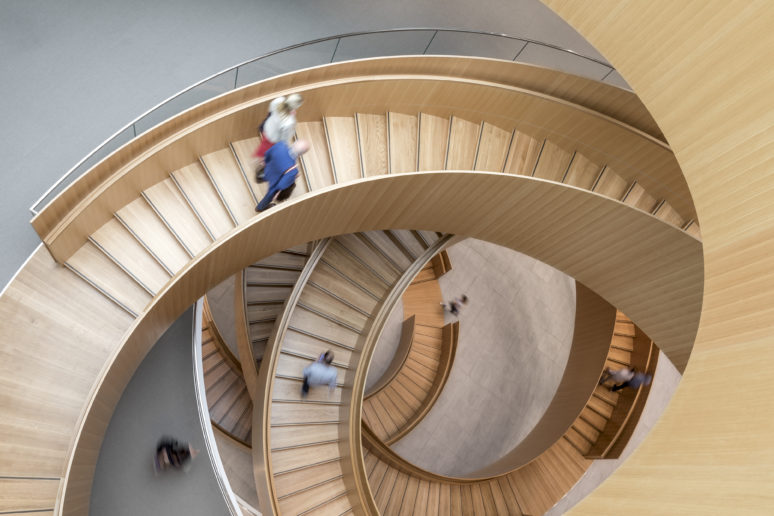
Five key elements, to reflect the five Olympic rings, are central to the creation of the ‘software’ and ‘hardware’ of the new building: symbolism, integration, flexibility, collaboration and sustainability.
Nicolas Rogemond, Programme Manager, International Olympic Committee, explained to the MIPIM audience that it was absolutely key to engage the workforce by asking them what they wanted. The conclusion: “For us it was really clear. It was functionality over design,” said Rogemond.
The IOC has signed a lease for 100 years, yet their key word is designing for ‘flexibility’.
As a central element to create an atmosphere of collaboration, the architects – Danish practice 3XN – designed an iconic ‘unity’ staircase that favours “serendipity”. The staircase gives access to a variety of spaces, all with window views, where people can interact. The other key element was for users to be able to easily find their way around the building.
“Olympic House is a unique building which provides a unique user experience,” said Rogemond. To encourage this new, collaborative way of working, and as part of the IOC@work2020 programme, 40 employees represent the entire organisation as Olympic House Ambassadors. “We work with them on every single topic,” said Rogemond.
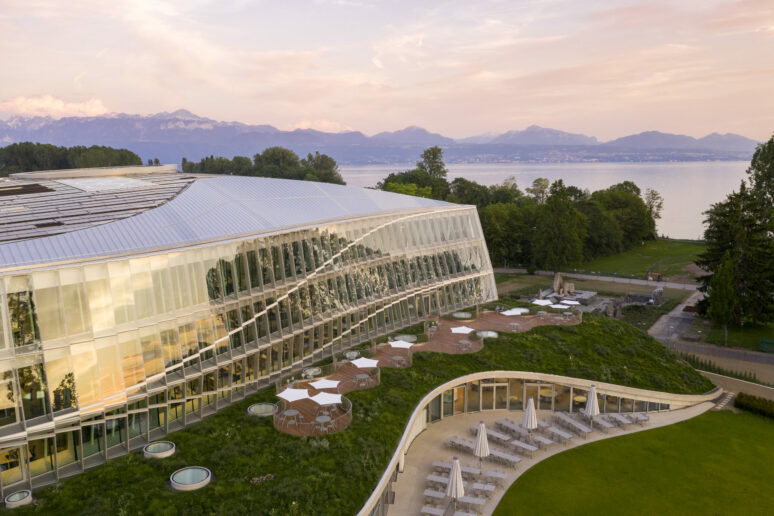
The IOC may have signed a lease with the city of Lausanne for 100 years, yet Rogemond says the key word for them is designing for ‘flexibility’. “We have invested a lot in flexibility,” he said. As another panel member added: “Having a lake for 100 years sounds like a great view.”
TOP PHOTO: IOC Headquarters at Lausanne
